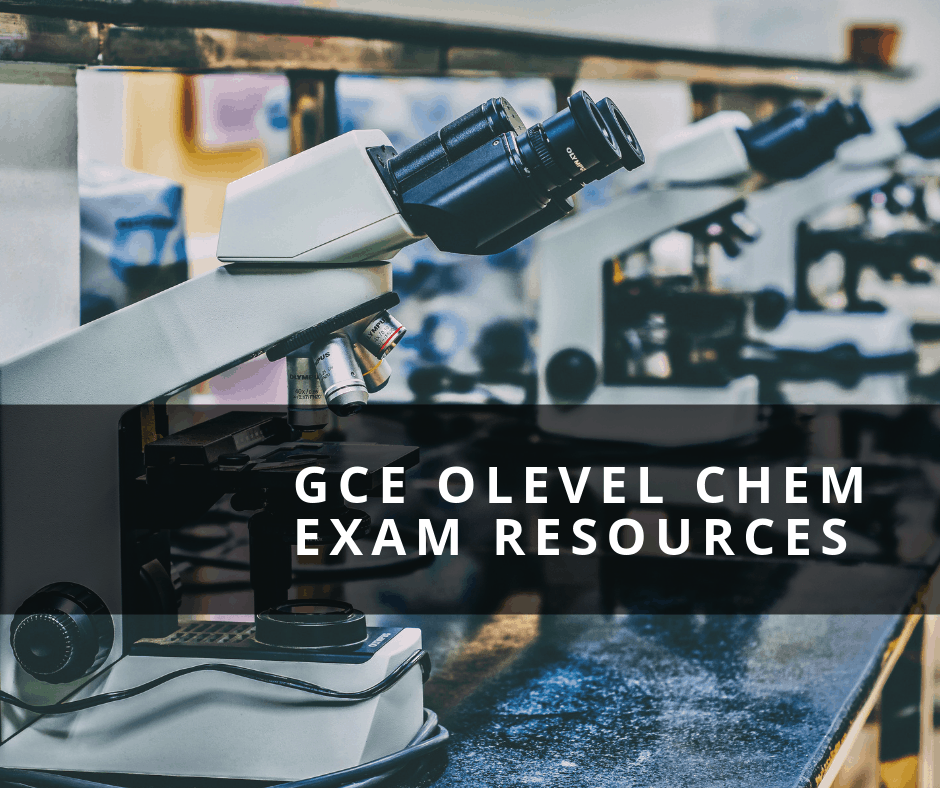Looking for GCE O Level Chemistry Exam Resources to prepare yourself for the upcoming O Level Chemistry exam? Tutopiya has useful resources to share with you and today we are discussing on the chapter of ORGANIC CHEMISTRY.
Organic Chemistry
The origin of oil
Crude oil is formed from organic material of the remains of plant and animal organisms that lived millions of years ago. These remains form sediments eg at the bottom of seas, and become buried under layers of sedimentary rock. They decay, without air (oxygen), under the action of heat and pressure to form crude oil over millions of years.
It is a fossil fuel because it is formed from once living organisms and the Sun is the original source of energy. It is a non-renewable and finite (limited reserves) energy resource because it takes millions of years to form and we burn it faster than its is formed! We do not have unlimited oil reserves!
Coal and natural gas (mainly methane CH 4 and often found with oil) are also non-renewable fossil fuels formed from the remains of plants or animals.
When fossil fuels are burned the ‘carbon’, as carbon dioxide, is returned to the living environment, gets used up in photosynthesis, the plant material decays or is eaten by animals, so completing the carbon cycle.

The SEPARATION of the crude oil mixture into fractions and the USES of these fractions.
A fraction is a mixture of a restricted boiling point range of molecules, they have a similar number of carbon atoms and physical properties. The uses of the fractions depend on their physical and chemical properties.

Crude oil is a complex mixture of mainly hydrocarbon compound molecules. A mixture consists of two or more elements or compounds which are not chemically combined.The chemical properties of each substance in the mixture is unchanged.
- This means crude oil can be separated by physical methods, in this case fractional distillation, because they have different boiling and condensation points.
- The most volatile fraction, ie with the lowest boiling point, boils or evaporates off first and goes to the top of the column.
- The rest separate out according to their boiling point so that the highest boiling fraction, ie the less volatile with higher boiling points, tend to condense more easily lower down the column.
- The bigger the molecule, the greater the intermolecular forces, so the higher the boiling point. Chemical bonds are not broken in the process, only the intermolecular force of attraction.
Fractional Distillation

Common Functional Groups in Organic Compounds

The alkane series of hydrocarbons
Alkanes are a group of hydrocarbon molecules in which all of the carbon and hydrogen atoms are only joined by single covalent bonds (eg C-H or C-C).
Alkanes are known as saturated molecules because other atoms cannot add to them. They are not very reactive unless burned!
The complete combustion of hydrocarbons

Equations for the complete combustion of a hydrocarbon

The incomplete combustion of hydrocarbons

What makes a good fossil fuel?
| Factors that should be taken into considerations | |
| 1 | Energy value: eg kJ of heat energy released per kg; |
| 2 | Availability: Geographical convenience, oil production levels; |
| 3 | Storage: Health and safety issues eg coal very safe, natural gas more dangerous |
| 4 | Cost: Extraction, transport, market price |
| 5 | Toxicity and Pollution: Greenhouse effect (which produces the least or most CO2 /energy released?);
sulphur content of fuel (most removed before fuel used to minimise sulphur dioxide and acid rain formation); efficiency of combustion eg minimum carbon monoxide and soot levels |
| 6 | Ease of use |
The alkene hydrocarbons series
Alkenes are hydrocarbons containing a double bond as well as single bonds. These are called unsaturated molecules because two atoms can join onto the bond when it opens up.
They are extremely reactive and important compounds in the chemical industry and are converted into very useful compounds eg plastics.
How to distinguish alkane and alkene hydrocarbons
Hydrocarbons are colourless. Bromine dissolved in water or trichloroethane solvent forms an orange (yellow/brown) solution.
When the bromine solution is added to both an alkane or an alkene the result is quite different. The alkane solution remains orange – no reaction.
However, the alkene decolourises the bromine as it forms a colourless dibromo-alkane compound.

The differences between alkenes and alkanes
| The differences between alkene and alkanes | |
| Alkenes | Alkanes |
| Alkenes are unsaturated molecules, atoms can add to them via the C=C double bond, so a reaction occurs. | Alkanes are saturated – no double bond – and atoms cannot add – so no reaction. |
Cracking
Cracking is done by heating some of the less used fractions to a high-temperature vapour and passing over a suitable hot catalyst.
The cracking reaction is an example of thermal decomposition – a reaction that breaks down molecules into smaller ones using hear.
The main products from cracking alkanes from oil are smaller alkanes (eg for petrol or diesel) and alkenes (eg for plastics).


About Tutopiya
Want to learn more about Organic Chemistry of the GCE O Level Chemistry syllabus? Tutopiya can help! We have other useful resources that you might find useful as well! How about some Mid-Year Exam Revision Notes for GCE O Level Chemistry? Click to read more!
Tutopiya is a Singapore online tuition agency that provides 1-1 individual online lessons for students aged 8-18 years old. We have highly qualified and trained tutors ready to teach you! Sign up now for a FREE 60 minutes trial lesson. ANY subject, grade, curriculum and topic of your choice! Sign up today!
